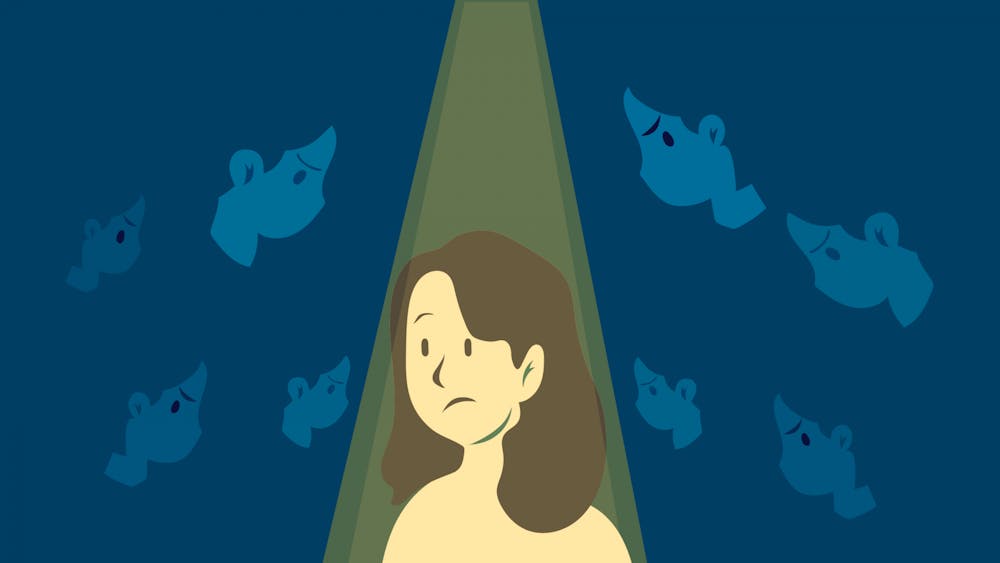
With student organizations recruiting new members, it’s time to talk about hazing. If you’ve been on campus, you have probably heard about, witnessed, or experienced hazing. Hazing exists on a spectrum, and there are some activities which are considered hazing that you may not expect. For example, requiring new members to wear unusual clothing, counts as embarrassment hazing.
Hazing has been an issue in Penn student organizations for years. According to Penn’s August 2021 Hazing Report, there have been 12 reported hazing incidents since 2016. This number is likely an underestimate of Penn student organizations that regularly engage in hazing, due to underreporting. Hazing often goes unreported because students are unsure about what counts as hazing or how to safely intervene. In addition, hazing is challenging to speak openly about because it can come at a social cost. If someone reports on their own club, they may fear social retaliation if they are found out as the snitch. Here’s a solution: Report hazing confidentially. All you need is the club name and evidence of what happened (trustworthy testimony, a picture, or a video) and email it to one of the University centers that addresses hazing concerns.
On a more abstract level, discussing “hazing” often distracts us from how these “traditions” impact new members. I interviewed two sources whose firsthand experiences illustrate how much work we have to do. Now, I would like to transition to my interviews with my two sources, who bravely shared their experiences.
Sam,* a recent Penn graduate, described her experience in an on-campus organization. She described hazing as when a student leader uses their seniority as an excuse to patronize new members. She said that, “sometimes those little actions or little words cause longer and more extreme pain.” Sam suggested a few reforms to make hazing prevention less adversarial and more constructive. Club leaders can start by deliberately checking in with new members, whether it is “face-to-face or sending anonymous surveys.” To stop hazing, Sam shared that “we all need to be compassionate with each other.” She expanded that organizations should return to their original purpose of “connecting, having fun, and building each other up.”
On the administrative side, I agree with Sam that “when there’s hazing … it is important to hold the individual accountable and not take down an entire organization because then that leads people to not report [an incident].” I also echo Sam’s belief that the Penn administration should “survey students in different grades, different organizations … [to] get a better idea about how … [hazing] could be better monitored.” Luckily, the Office of Student Affairs has received recommendations from the Hazing Prevention Consortium on how to fix the hazing problem on our campus. However, ending hazing will only happen if it’s a student-driven project.
Mark* is a fourth-year undergraduate. Mark shared his experience in a fraternity. He recounted that in the pre-pandemic world, he was forced to do “workouts in different areas of the house,” and the older members “[would] assign unnecessary work … to the [first years] because that’s how it’s always been.” Mark said he believes that, “there are more people who are open to a different model of pledging and behavior than they realize.” However, Mark does not think that the Penn administration is capable of stopping fraternities from carrying out these “undercover” hazing rituals. He said that reform must be an internal process, meaning that club leaders are the only ones who can implement alternative ways to build and retain their memberships.
Mark was not sure where to look to seek support. He decided not to report the hazing he experienced, even though he could have done so anonymously.
In response to student leaders who may argue that hazing rituals must continue because of tradition, Mark said that leaders should engage in a critical questioning of why organizations need to haze new members. Although one may look back at a hazing experience and laugh, he mentioned that “not everyone has the same recollection of events … Just because you weren’t hurt doesn’t mean someone else wasn’t.” Mark encouraged student leaders to begin new traditions, which can be done by finding alternative activities to hazing — such as starting a peer mentorship program or playing a sport together.
A good rule of thumb for whether something is hazing or not: If club leaders are requiring that only a subgroup of their membership do a certain activity, it may be approaching hazing territory. If everyone is doing an activity together — such as if everyone wears silly costumes to a party instead of just the new members — then it is less likely to be hazing.
Reflecting upon the start of a new semester, Mark said that it is a “critical time for student organizations to assess” themselves and recognize that student leaders can “start from scratch.” Mark said that student leaders must prioritize fostering a welcoming environment so everyone feels like Penn is “their campus community.”
Hazing can end if we decide that it should. Let’s spread the word of what hazing is and how to report it. Let’s normalize conversations about hazing so that we can all heal together.
* Name has been changed for privacy reasons.
JADEN CLOOBECK is a College fourth year from Laguna Beach, Calif. studying psychology. He is the founding Chair of Beyond Hazing, Penn’s new hazing prevention student organization. His email address is jaden@sas.upenn.edu.
The Daily Pennsylvanian is an independent, student-run newspaper. Please consider making a donation to support the coverage that shapes the University. Your generosity ensures a future of strong journalism at Penn.
Donate







